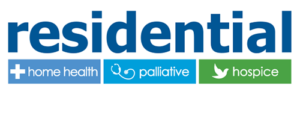Working in Patient Homes
Better Relationships
Working in Patient Homes
You can be so much more effective as a nurse when visiting patients in their home environments. We hear it over and over from nurses in hospital or clinical settings. When providing care in the home, you don’t have to wonder these things. You get to educate and empower your patients in a way you simply can’t in the hospital.
I wonder what happens to my patients once they’re discharged. Are they getting better?
This patient says he’s watching his sugar, but does he really know how to find hidden sugar in his pantry?
My patient is so interested in going home that I’m not sure she’s really hearing me about how to walk safely on that injured leg.
Independence
Tamara Felton
“You get to hone in on your critical thinking skills, you get to really manage these patients at home.”
When you work in patient homes, you use your own clinical judgment to determine what your patients need.
Sometimes, it’s an order from the primary care doctor to change a prescription. Maybe it’s education on diabetes management or heart health. It’s you with your patient, one on one.
You can spend the time you need to provide the care you think best. You’re not rushing to the next hospital bed or examining room. Instead, you’re listening, assessing and taking care of your patient. When the visit is over, you can hop in your car, drive to your next patient’s home and spend that valuable 1:1 time with them.
Better Patient Relationships
One of the most common complaints nurses in offices and hospitals have is that they don’t really get to know their patients.
They’re often moving from one room to another, dispensing meds or taking blood pressure, for example. Working in home health or hospice is a whole different ball game.
When you’re caring for a patient in their home, you can watch their progression over time, helping them recover from surgery, build their strength, or, in the case of hospice patients, helping make their final days as easy and meaningful as possible in the comfort of their own homes. What could be more fulfilling?
Sharon Moore
“You get to follow the patients from the time they get out of the hospital, almost their lowest, to the time they’re independent and better, and no longer need us.“
Eyes on Their Home Life
Bethanie Westervelt
“It’s nice to be able to go into the hone, see that whole family that’s there and be able to provide them support also.”
It’s just a fact: patients are not as comfortable in a medical office or hospital bed as they are at home. They are more likely to focus on going home rather than what they need to be doing medically or therapeutically.
Patients are much more at ease in their own homes. And you can see the real-life situation they’re in. You can look in the kitchen cupboard of a heart patient and show them how to find sodium content on soup labels. You can see the cluttered stairway of a patient with a knee replacement and educate them and their family about maintaining clear pathways. Hospice clinicians can draw on the advantages of home, like having their family, pets, music and so on in their own familiar surroundings to help maximize patient
well-being.
Why wait for the latest job alert?
Connect with a career navigator today at (888) 444-0454 or, easily apply to jobs below.


